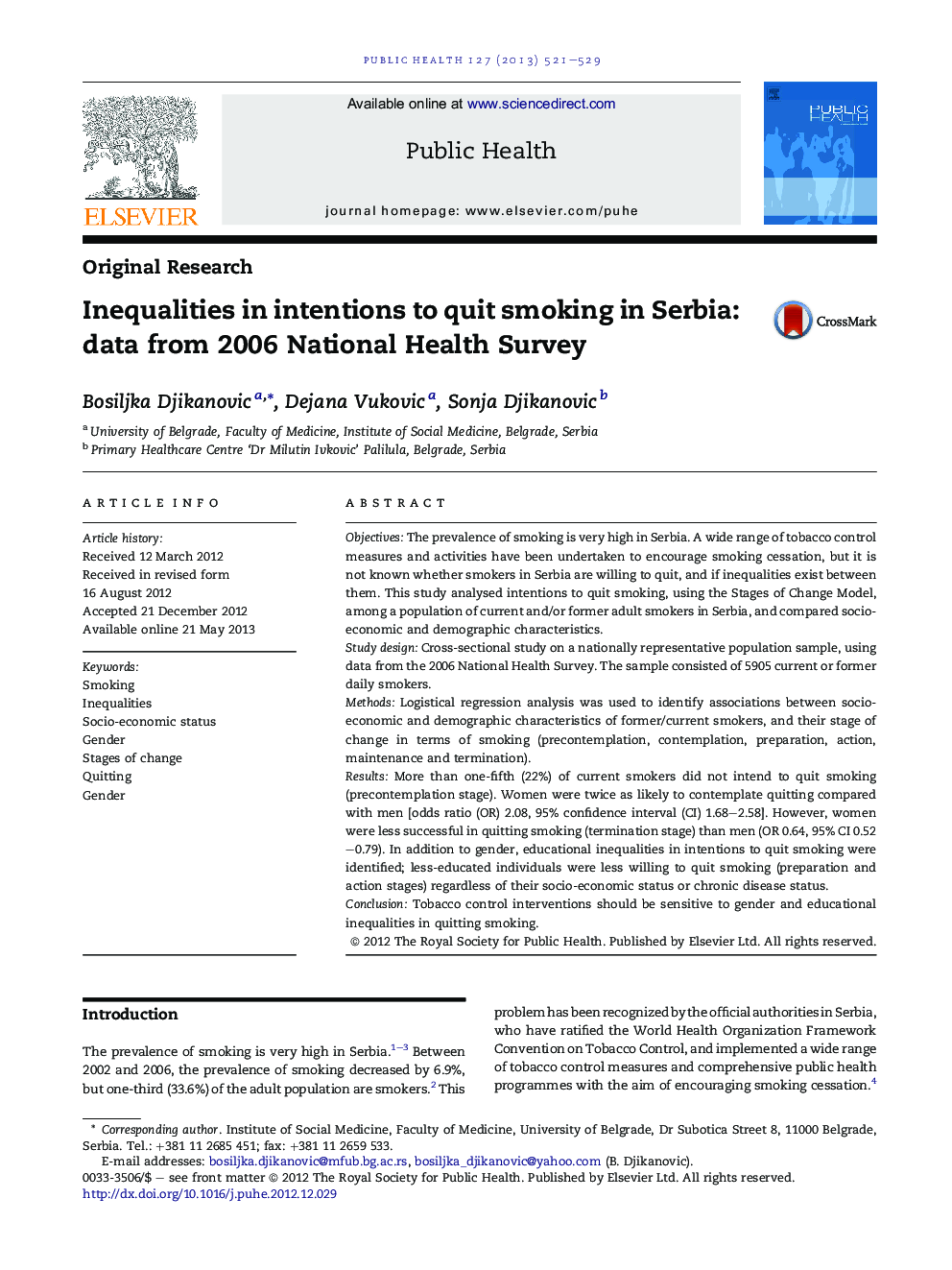| Article ID | Journal | Published Year | Pages | File Type |
|---|---|---|---|---|
| 1087632 | Public Health | 2013 | 9 Pages |
ObjectivesThe prevalence of smoking is very high in Serbia. A wide range of tobacco control measures and activities have been undertaken to encourage smoking cessation, but it is not known whether smokers in Serbia are willing to quit, and if inequalities exist between them. This study analysed intentions to quit smoking, using the Stages of Change Model, among a population of current and/or former adult smokers in Serbia, and compared socio-economic and demographic characteristics.Study designCross-sectional study on a nationally representative population sample, using data from the 2006 National Health Survey. The sample consisted of 5905 current or former daily smokers.MethodsLogistical regression analysis was used to identify associations between socio-economic and demographic characteristics of former/current smokers, and their stage of change in terms of smoking (precontemplation, contemplation, preparation, action, maintenance and termination).ResultsMore than one-fifth (22%) of current smokers did not intend to quit smoking (precontemplation stage). Women were twice as likely to contemplate quitting compared with men [odds ratio (OR) 2.08, 95% confidence interval (CI) 1.68–2.58]. However, women were less successful in quitting smoking (termination stage) than men (OR 0.64, 95% CI 0.52–0.79). In addition to gender, educational inequalities in intentions to quit smoking were identified; less-educated individuals were less willing to quit smoking (preparation and action stages) regardless of their socio-economic status or chronic disease status.ConclusionTobacco control interventions should be sensitive to gender and educational inequalities in quitting smoking.
